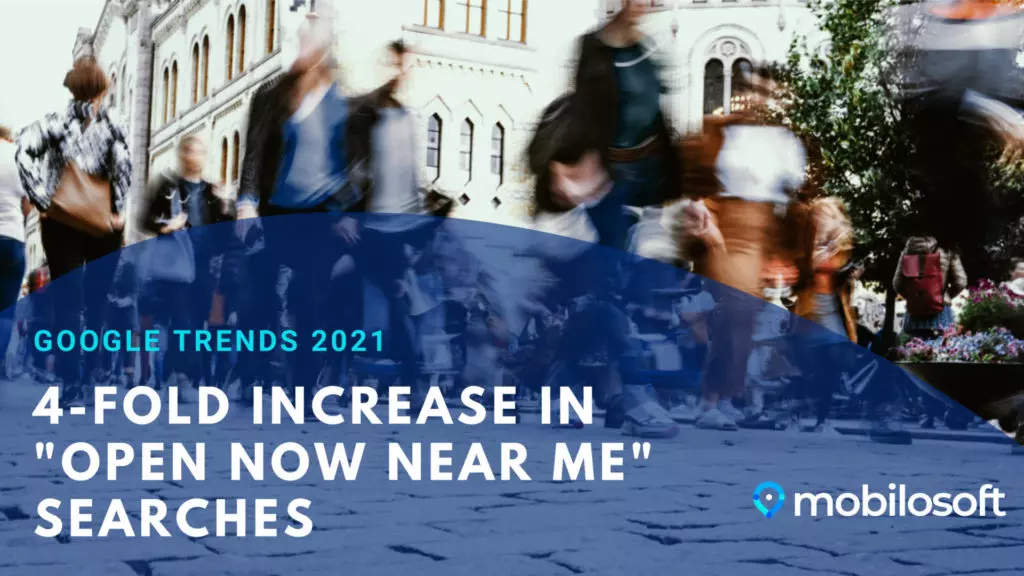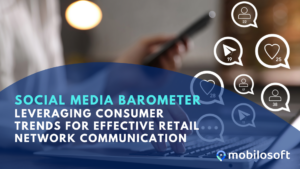Last Tuesday, October 26th, Alphabet, the parent company of Google, announced its results for the 3rd quarter of 2021. Besides the fact that the revenues of the different entities of the group are increasing, one particular point caught my attention: the figures related to local digital marketing.
In this cop26 week, I also wanted to mention that Google Maps has recently introduced a new feature in the US: the possibility to choose the most eco-friendly route in addition to the fastest way. This is an interesting announcement in the middle of this climate conference. Let’s hope that users will follow this exciting development.
Local is becoming more and more present in the purchasing process
The point that touches me the most in this quarterly conference presented by Alphabet is, of course, the one related to local digital marketing, and here the figures are quite impressive. They reinforce the message we are trying to get across to our customers, and although post-covid reopenings are not happening in the same way in all countries, overall, Google’s results related to proximity searches are very encouraging for retailers.
It is now up to them to get up to speed to meet the expectations of consumers who are demanding an increasingly omnichannel experience. At the end of 2021, consumers will be more flexible than ever and will be looking to simplify their lives. Therefore, retailers must offer them as many shopping options as possible to attract them and make them want to fill their shopping baskets, whether it is virtual or real.
4 times more “open now near me” searches
The first interesting figure is the evolution of what Google calls “near me searches“, i.e. searches made by consumers to find products/services/points of sale close to where they are located. According to Google, from a global point of view, between the 3rd quarter of 2021 and the 3rd quarter of 2022, there will be a fourfold increase in the number of these “near me” searches. Of course, we have to take a step back from these figures as they are global and refer to
- An increase in the number of consumers using Google’s local search tools
- An increase in the number of searches made by existing users.
From a local perspective, Alphabet does not give detailed figures on these aspects. At Mobilosoft, depending on the industry, we can see quite variable growth. However, it is a fact that the volume of searches has been constantly increasing for many years.
Google invests in providing more and more precise information
Thanks to our clients’ reports, we have been able to understand that, over the last 3 years, local queries have changed enormously.
- Three years ago, 70% of searches were brand + location related, with consumers looking for their favourite store.
- Today, these searches represent only 30% of the volume. In concrete terms, searches are increasingly oriented towards products, services, and even types of stores.
This evolution of local search habits is echoed in the investments that Google is making at the local level, a train that some advertisers have already embarked on, as mentioned by Jim Friedland, Director of Investor Relations at Google:
- “Advertisers are increasing their paid campaigns alongside their free listings.”
- We’ve launched new formats (paid and free) to allow them to do that.
- They have increased their return on ad spend by 30% compared to the same period before COVID.
And this was further reinforced by Philipp Schindler, SVP & Chief Business Officer at Google, also:
- “Strong growth in local searches shows that consumers are searching more for physical retail outlets before they go there.”
- By adding product feeds to their campaigns, advertisers achieve an average of 60% more conversions at a lower price.
Towards an omnichannel strategy with a predominant role for physical outlets
Knowing that each retailer has the possibility of setting up various pages for their points of sale (Facebook, Google Business Pages, Store Locator), it is therefore important to understand that these have a primary role. These pages and their content are referenced from a local point of view by Google, so the products and services added to them are also referenced.
For example, if a brand sells Nike trainers and has 1000 points of sale in Europe, and if it references the different Nike models sold on the shop pages of its 1000 points of sale, the brand gains as many possible local mentions as it has shops and pages. It can then redirect consumers either to the shop page on the Store Locator or to the e-commerce site, depending on their expectations. Such a strategy, therefore, has an omnichannel impact: it promotes both online and in-store sales.
An advantage for retail networks?
The link is quickly made. While some marketplaces like Amazon open physical outlets to promote an omnichannel experience, retailers with a deep-rooted network can benefit from the implementation of a real local strategy, with each outlet becoming a new gateway that references
- The brand
- The type of retailer
- The products or services offered
How can retailers gain a competitive advantage in the digital world?
If you want to offer a true omnichannel experience to your customers, here is the recipe to follow:
- Create local pages for your stores on Google My Business, Facebook Places, and on your website (Store Locator).
- Stimulate and respond to customer reviews to reinforce your local brand positioning.
- Enrich your pages with your products and/or services on local pages.
- Include a catalogue of the most popular products for each shop on the local pages!
And if, in parallel, you offer an e-commerce site, your brand will have an infrastructure that none of your marketplace competitors will ever have. This infrastructure will respond to the evolution of demand, which, according to Google’s figures, is increasingly omnichannel!
If you want to be kept up to date with the latest trends in local digital marketing, follow us on LinkedIn




